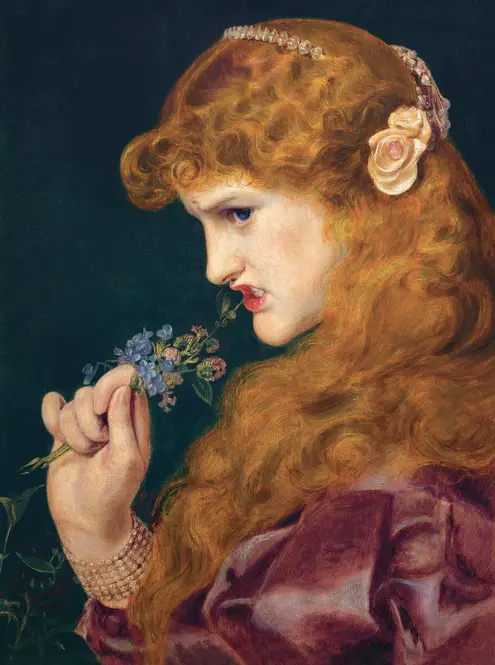Frederick Sandys
Frederick Sandys (1829–1904), English, A leading figure of the Pre-Raphaelite movement, though never an official member, this Victorian artist crafted hauntingly detailed portraits and mythological scenes with a signature blend of realism and symbolism. His work stood out for its meticulous attention to texture—whether the gloss of hair, the weave of fabric, or the delicate pallor of skin—often infused with a melancholic or enigmatic aura. Influenced by early Renaissance masters and the Romantic poets, he favored subjects like tragic heroines, sorceresses, and Arthurian legends, though his most arresting pieces often centered on women whose gazes seemed to hold untold stories.
Though overshadowed by contemporaries like Rossetti, his technical prowess was undeniable. *Medea* (1868), for instance, captures the sorceress mid-incantation, her hands clutching poisonous herbs, the painting’s jewel-like tones and hyper-detailed flora echoing Pre-Raphaelite ideals while pushing toward something darker and more psychological. Financial struggles and a reputation for being difficult limited his output, yet his influence seeped into later Symbolist and Aesthetic movements. Personal turbulence—including a scandalous affair with actress Mary Emma Jones—further colored his legacy, blending his life and art in a haze of Victorian drama. Today, his works are prized for their eerie beauty, a bridge between Pre-Raphaelite idealism and the creeping unease of fin-de-siècle decadence.
Though overshadowed by contemporaries like Rossetti, his technical prowess was undeniable. *Medea* (1868), for instance, captures the sorceress mid-incantation, her hands clutching poisonous herbs, the painting’s jewel-like tones and hyper-detailed flora echoing Pre-Raphaelite ideals while pushing toward something darker and more psychological. Financial struggles and a reputation for being difficult limited his output, yet his influence seeped into later Symbolist and Aesthetic movements. Personal turbulence—including a scandalous affair with actress Mary Emma Jones—further colored his legacy, blending his life and art in a haze of Victorian drama. Today, his works are prized for their eerie beauty, a bridge between Pre-Raphaelite idealism and the creeping unease of fin-de-siècle decadence.
-

Love’s Shadow
Frederick Sandys (English, 1829–1904)A mesmerizing portrait of longing and mystery, where light and shadow dance around a figure steeped in emotion.
